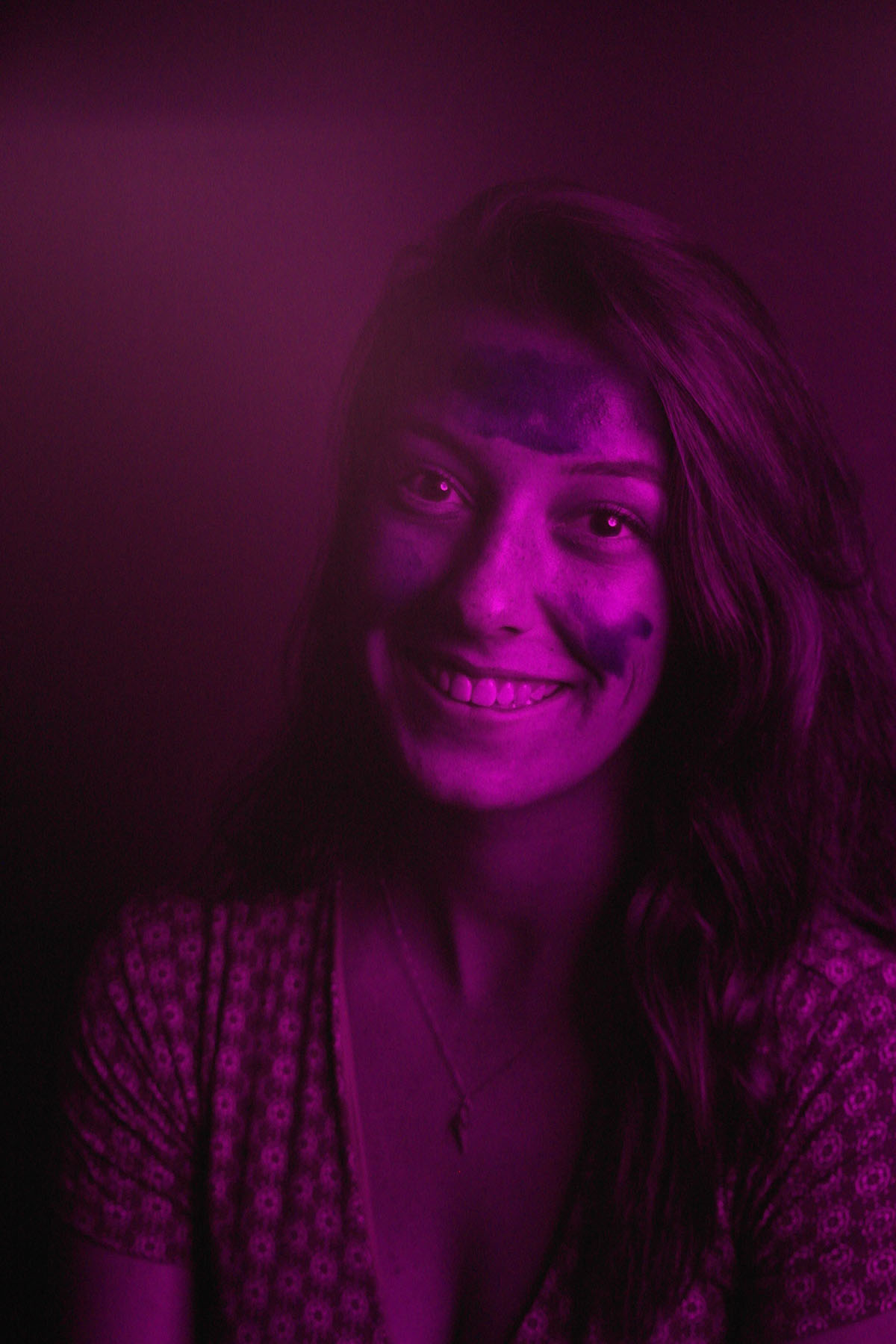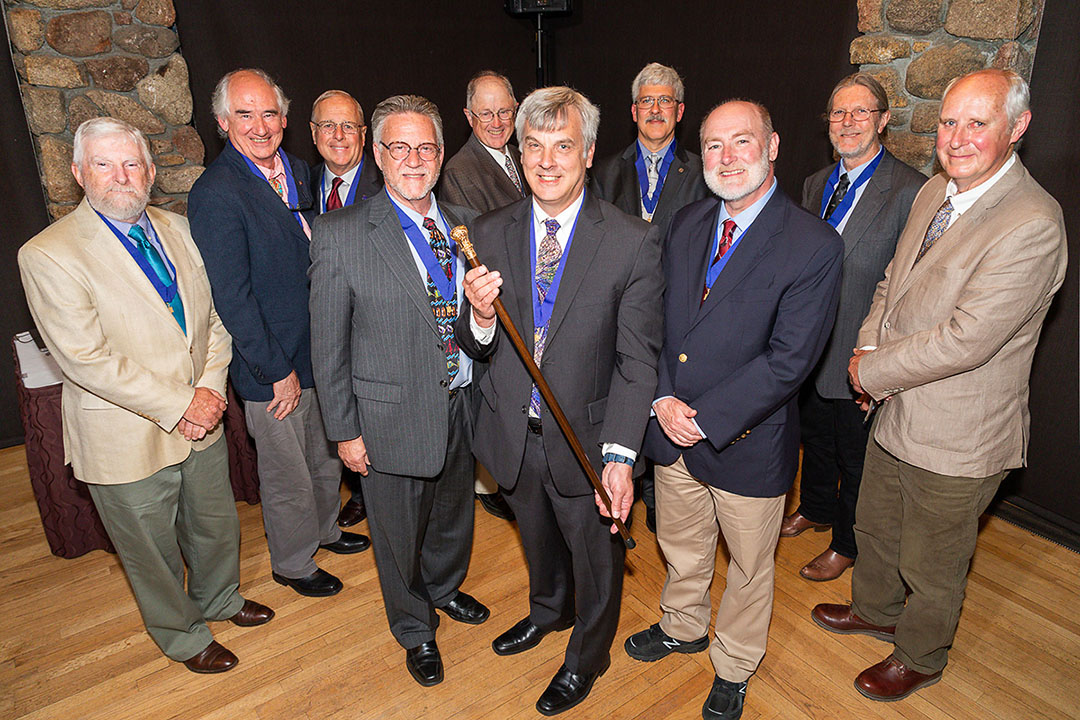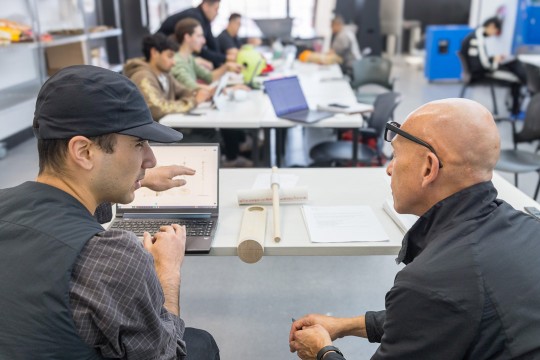Photo Sciences faculty wins prestigious lifetime achievement award
David Bishop
Ted Kinsman holds the gold-headed cane he received for winning the prestigious Louis Schmidt Award, the highest honor given by the BioCommunications Association. To his right is Michael Peres, associate director of the School of Photographic Arts and Sciences.
Ted Kinsman grew up with cameras.
His father was a professor of mechanical engineering who had a lifelong interest in photography. And inside his childhood home was a self-made darkroom his father often worked in.
It rubbed off.
Then and now, photography was and is all around Kinsman, an assistant professor in RIT’s Photographic Sciences program. He took a particular interest in the science of photography as a youngster. His photos of nature eventually matured into making a career out of blending photography and science.
Earlier this year, Kinsman was awarded the prestigious Louis Schmidt Award, the highest honor given by the BioCommunications Association. The award recognizes outstanding contributions to the progress of biocommunications. Chosen from a worldwide pool of nominees, Kinsman thrives at using physics and technology to make photographs.
Kinsman’s recent book, Cannabis: Marijuana Under the Microscope, was one of the reasons he received the honor. The publication has gained tremendous popularity online, getting featured by Business Insider and BNN Bloomberg, among other news outlets.
“The Louis Schmidt is a big deal,” Kinsman said. “The award ceremony this year was in Monterey, Calif., and I got to meet a number of the past recipients. All are very well known in their fields. I really feel I am too young to receive a lifetime achievement award like this.”
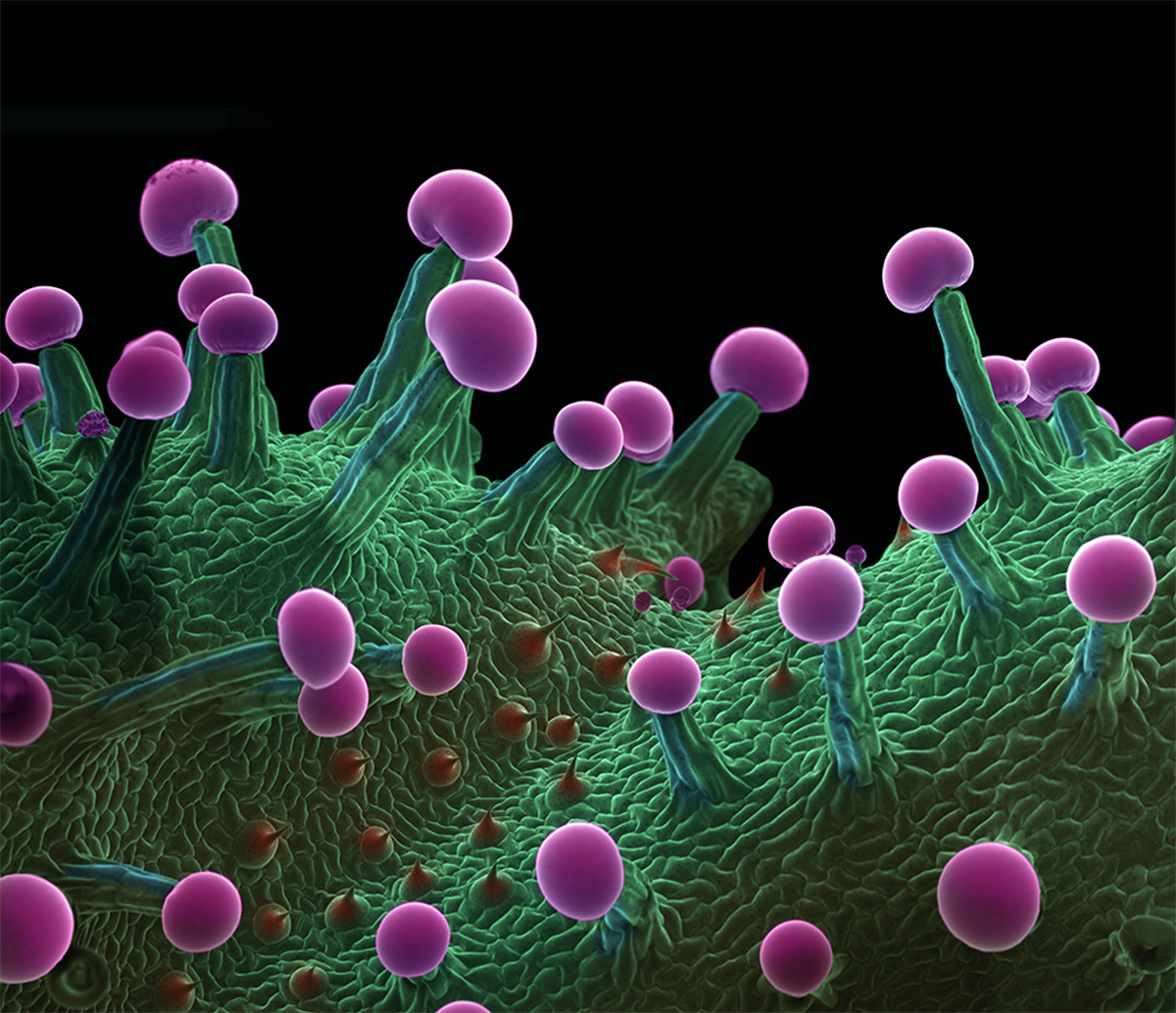
Kinsman’s varied experience as a scientist and educator provides great value to his students. Prior to joining RIT in 2013, he was an optical engineer, physicist and high school physics instructor.
“It’s been a big shift, but there are so many people to bounce ideas off of (at RIT) and there’s so much potential,” Kinsman said. “This truly is the best photo school in the world.”
Kinsman is one of only a few active high-speed photographers able to capture images faster than a speeding bullet at times less than 1/1,000,000th of a second. His most recent work resides in the X-ray region of the light spectrum, while exploring new ways to capture images that illustrate what is beyond the line of sight for books and magazines.
His work has appeared on ABC, BBC, CBS, Crime Scene Investigations (CSI), Discovery Channel, NBC, PBS and South Park. He was also credited in the director’s cut for his work on “Avatar” and the “Frozen Planet” series.
“My work is everywhere,” Kinsman said. “I took an X-ray image of a pregnant turtle once and won the National Science Foundation’s Imaging Science Contest for it and then a band asked me if they could use it as their album cover.”
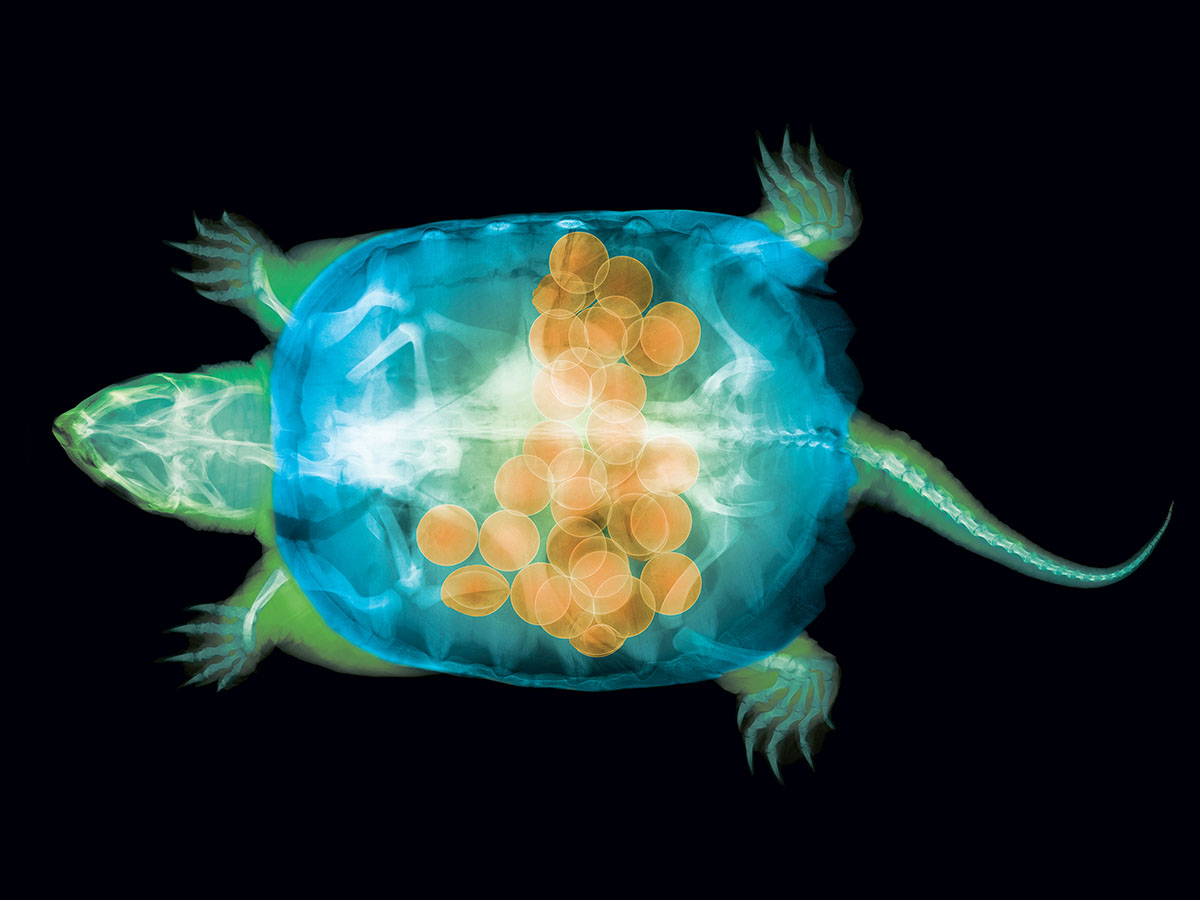
Kinsman has made his mark in the entertainment industry with his time-lapse imagery, too. He has shot footage that appeared in a Britney Spears perfume ad as well as concerts.
“I went to a concert once and they played time-lapse footage behind the performers and a friend said to me, ‘You should do work like this,’” Kinsman said. “I just laughed and said, ‘That is my work.’”
Additionally, Kinsman is an inventor. With his focus on how to use photography to teach science in mind, he created a machine that makes large portraits out of drops of coffee.
Some of his unique innovations have earned him prestigious awards in scientific photography.
“There is always something new to photograph,” Kinsman said.
